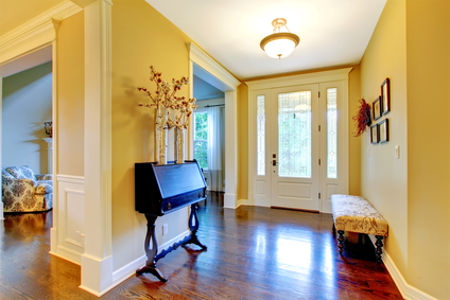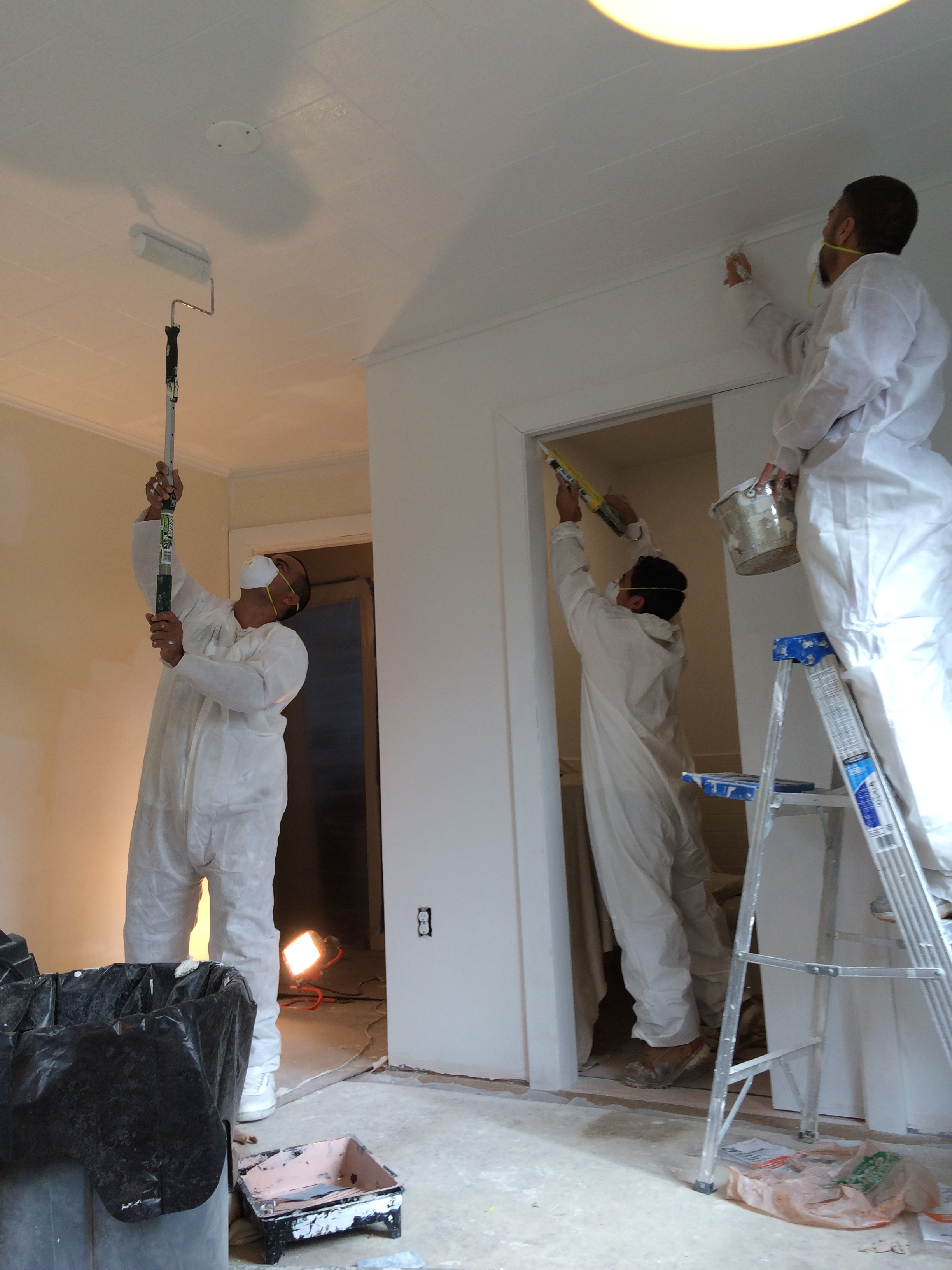Color Consultation in Lakewood: Expert Advice for Perfectly Coordinated Interiors
Color Consultation in Lakewood: Expert Advice for Perfectly Coordinated Interiors
Blog Article
Enhance Your Inside Design With Comprehensive Shade Consultation
The assimilation of shade appointment into indoor style presents an one-of-a-kind possibility to refine and raise the psychological and aesthetic resonance of an area. By involving with a seasoned shade expert, you can browse the complexities of color option, guaranteeing that your selections not just enhance building functions yet additionally reverberate with personal design and psychological effect.
Advantages of Color Appointment

In addition, color appointment aids in taking full advantage of all-natural light and maximizing spatial perception. Lighter colors can make a space show up even more large, while darker tones develop an intimate setup. Cleveland Metro Painting Specialists. This tactical application of shade can substantially affect the total setting of any type of indoor area
In addition, professional consultants have a thorough understanding of ageless standards and current trends, making sure that the picked shades will certainly stay appealing with time. This foresight can save clients from pricey redesigns in the future. Shade assessment empowers customers by offering them with a clear vision and instructions, fostering confidence in their style choices and ultimately leading to a more effective and satisfying interior design result.
Recognizing Shade Psychology
The value of color psychology in interior decoration can not be overstated, as it explores the psychological and psychological effects that various tones can stimulate in individuals. Shades can affect state of mind, behavior, and even efficiency, making them an essential consideration in any style project.
For example, cozy colors such as red, orange, and yellow are often associated with power and warmth. They can promote feelings of enjoyment and comfort, making them suitable for social rooms like living kitchens or areas. On the other hand, awesome shades like blue, eco-friendly, and purple tend to stimulate peace and tranquility, making them perfect for rooms or reflection areas.
Additionally, the use of neutral tones can produce a balanced environment by enabling the bolder colors to stand out without overwhelming the detects. Understanding these mental influences allows developers to create spaces that not only look visually pleasing but also promote emotional well-being.
Incorporating shade psychology into interior decoration includes a thoughtful option of colors customized to the designated function of each room, ultimately enhancing the general experience for its owners. This awareness is vital for attaining a functional and harmonious interior atmosphere.
The Shade Wheel Clarified
Understanding the partnerships in between tones is essential for reliable interior decoration, and the shade wheel serves as an important tool in this process. The color wheel, created by Isaac Newton in the 17th century, illustrates the range of shades set up in a circular style. It comprises primaries-- red, blue, and yellow-- that can not be created by mixing other colors. Additional colors, developed by integrating key colors, consist of environment-friendly, orange, and purple. Tertiary shades result from mixing a primary and a second shade, bring about tones such as blue-green and red-orange.
The shade wheel aids developers realize the relationships between colors, including corresponding, analogous, and triadic plans. Complementary colors, positioned opposite each various other on the wheel, produce vivid contrasts that can invigorate a space. Analogous shades, located next to each other, offer a harmonious and natural appearance. Triadic plans utilize three uniformly spaced colors, using balance and visual interest.
Making use of the shade wheel in interior decoration not just enhances visual charm however additionally stimulates particular feelings and atmospheres, making it an essential recommendation for shade examination. Comprehending these relationships inevitably equips designers to develop areas that are both practical and visually fascinating.
Picking the Right Combination
Usually, selecting the ideal scheme is a decisive consider accomplishing an effective indoor layout task. A well-chosen color design can combine a space, boost its functions, and evoke wanted emotions. To begin, consider the function of the space. Different rooms serve varied features and need combinations that reflect their intended use; as an example, relaxing colors such as soft blues or eco-friendlies work well in rooms, promoting leisure.
Light can drastically change how shades see post appear, so it is necessary to assess the space at different times of the day. An unified scheme ought to complement these features, creating a natural look throughout the room.
When choosing colors, make use of the 60-30-10 regulation, which suggests that 60% of the area must be a dominant color, 30% an additional color, and 10% an accent shade. This ratio makes certain equilibrium and visual passion (Cleveland Metro Painting Specialists). Lastly, example colors on the wall surfaces before devoting, as this allows you to see just how the shades engage with each other and the overall ambiance they produce in your interior design job.
Dealing With a Color Expert

When working with a color specialist, the process generally begins with an initial consultation. During this conference, you'll review your vision, choices, and the existing aspects in your area. The specialist will assess your needs and might recommend certain shade combinations that align with your goals.
After developing an instructions, the expert will provide examples and aesthetic aids to help you picture the recommended color design. This step is crucial, as shades can show up in a different way under varying lights problems.
Additionally, a shade expert can direct you in selecting corresponding furnishings, art work, and devices to harmonize with your picked combination. By collaborating very closely, you can accomplish a polished aesthetic that elevates your insides and creates a welcoming atmosphere. Inevitably, the know-how of a color professional can considerably boost the general impact of your style task.
Final Thought
In summary, detailed color examination acts as a crucial tool for improving interior decoration. By leveraging specialist knowledge of shade psychology and spatial characteristics, a tailored shade scheme can be established to stimulate specific emotions and develop a harmonious atmosphere. This critical method not only fosters a natural layout narrative however additionally mitigates the danger of pricey redesigns. Ultimately, engaging with a shade professional guarantees a notified and cosmetically pleasing outcome, elevating the general experience of the room.
By involving with a seasoned color consultant, you can navigate the complexities of color selection, guaranteeing that your choices not only complement architectural features but also resonate with personal design and emotional influence. It consists of key shades-- red, blue, and yellow-- that can not be produced by mixing other shades.The color wheel aids developers comprehend the partnerships in between colors, including complementary, analogous, and triadic schemes.When picking shades, use the 60-30-10 policy, which suggests that 60% of the space should be a dominant shade, 30% a second color, and 10% an accent color. By leveraging expert expertise of shade psychology and spatial dynamics, a my website tailored shade combination can be established to evoke details feelings and produce a harmonious setting.
Report this page